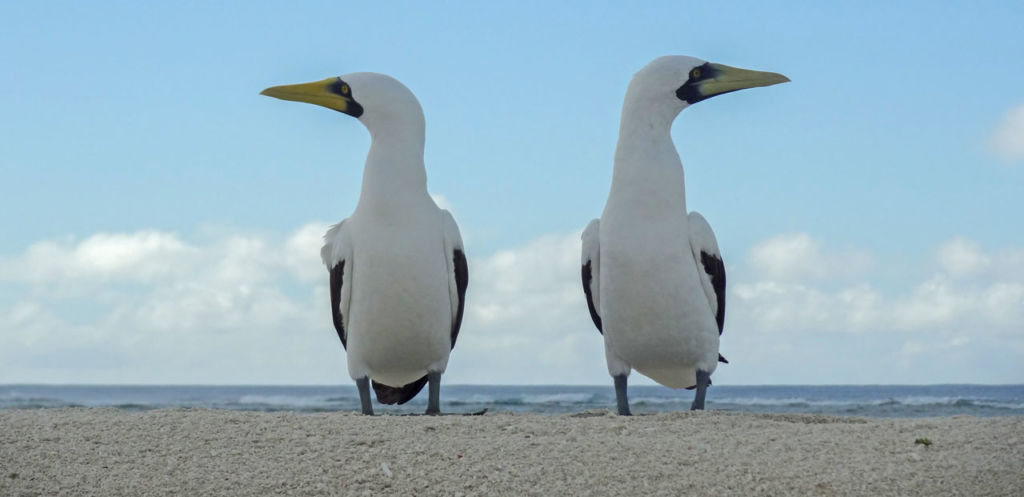[LUM#9] Man, the carcinogenic species
Human activities could be leading to an increase in cancer rates in wildlife. A highly underestimated phenomenon that researchers wish to study more closely to better understand this disease and perhaps develop new treatments.

Whether marine or terrestrial, urban or rural, feathered or furry, no species seems immune to cancer. A disease that is booming in animals too, as suggested by a study conducted by researchers at the Centre de recherches écologiques et évolutives sur le cancer (CREEC). They believe that human activities could lead to an increase in cancer rates in wildlife.
"It has now been proven that global changes increase the incidence of cancer in humans, so we assumed that these same changes would also increase cancer rates in animals, which share the same environment as we do", explains Mathieu Giraudeau, researcher at the Mivegec laboratory and CREEC member. Global changes? Chemical pollution, of course. But not only...
Chemical pollution
Pesticides, endocrine disruptors, microplastics, residues from the pharmaceutical industry - these are all substances known for their carcinogenic effects, and to which animals are exposed just as much as humans. And even more so," laments Mathieu Giraudeau, " because there are standards limiting exposure for humans, but the wild animals that populate agricultural areas are certainly exposed to much higher doses than we are."
Belugas in Canada's St. Lawrence Estuary are a case in point: in water heavily polluted by effluent from the aluminum industry, 27% of these marine mammals were found to have cancer. Similarly, California sea lions show an increase in cancer rates caused by water pollution with organochlorine compounds.
Pollution that does not spare feathered species: "It is predicted that by 2050, 99% of seabird species will have ingested microplastics." This contamination is problematic because microplastics release a multitude of chemical compounds into the body, some of which, like bisphenol A, have a proven carcinogenic effect.
Light pollution
In addition to this chemical pollution, wild animals are confronted with an environmental modification of another kind: light pollution. In humans, studies show that exposure to artificial light at night disrupts the production of melatonin, the hormone that regulates the biological clock. This disruption is associated with a higher risk of cancer. "Birds exposed to night-time light pollution also suffer disruption of their circadian rhythms and melatonin production. There are even species where some pairs nest on city streetlamps", explains Mathieu Giraudeau.
Dietary changes
Researchers have identified a third factor that can increase the incidence of cancer in animals: diet. "It's a particularly important problem in urban environments, whether it's the food they're fed in parks or the wild animals that eat out of garbage cans. This diet doesn't meet their needs, leading to micronutrient deficiencies and microbiome changes that can be associated with cancer", explains the researcher. And urban animals are not the only ones concerned: one study, for example, showed that 92% of griffon vultures contained fluoroquinolone residues, a family of antibiotics administered to livestock whose carcasses are consumed by scavengers and which have carcinogenic properties.
Genetic impoverishment
The decline of many species could also make them more vulnerable to cancer. " If there are fewer and fewer individuals in wild animal populations, there is also less genetic diversity, which can favor the accumulation of mutations favorable to the onset of cancer", explain the researchers. This phenomenon has been verified in two endangered species: the grey foxes of the Santa Catalina Islands in California and the Cape Mountain zebras in South Africa, in which reduced genetic diversity has increased cancer rates.
New therapeutic strategies
Despite a deplorable lack of data, the researchers are categorical: all the animal species studied are affected by cancer. " We know the prevalence of cancer in just 31 vertebrate species", says the researcher, who believes that cancer is highly underestimated in wildlife. " We now need to collect more data in the field to better assess cancer in wild populations, and experimentally verify the impact of human activities on animals", explains Mathieu Giraudeau.
This field of research is of particular interest to scientists, as it opens up new avenues in the fight against cancer in humans. "Some animal species develop adaptations to survive in polluted environments, while others are more resistant to cancer. If we can gain a better understanding of these phenomena, we may be able to develop new therapeutic strategies to combat this disease, based on the anti-cancer defenses developed by these species.
UM podcasts are now available on your favorite platforms (Spotify, Deezer, Apple podcasts, Amazon Music...).